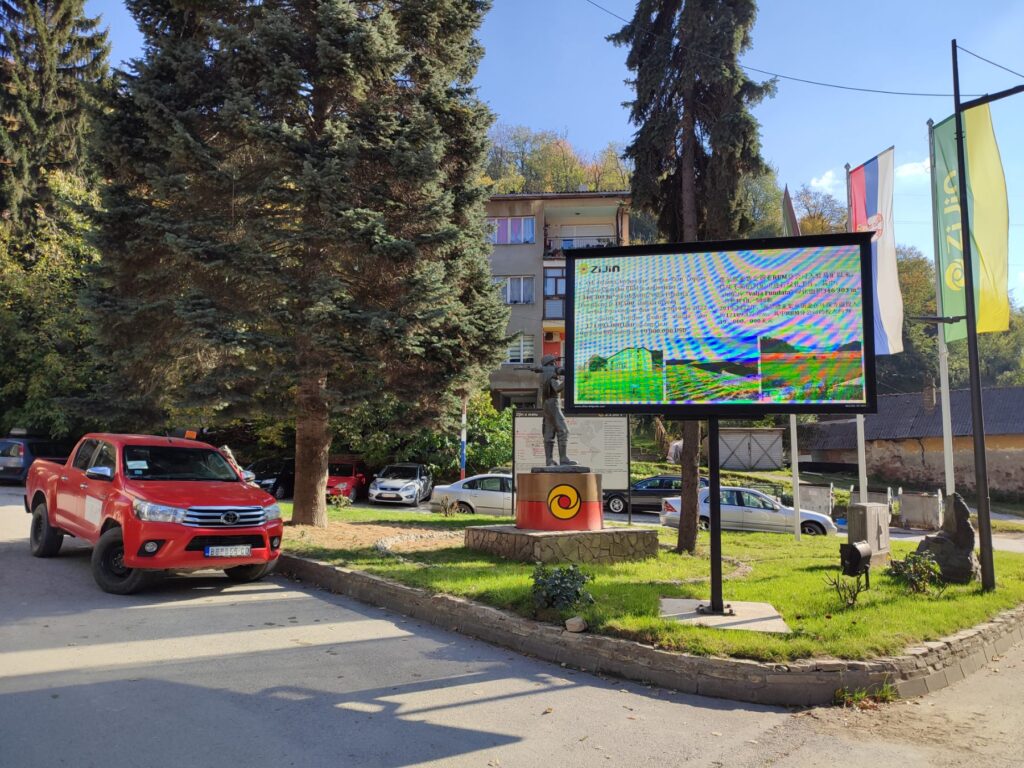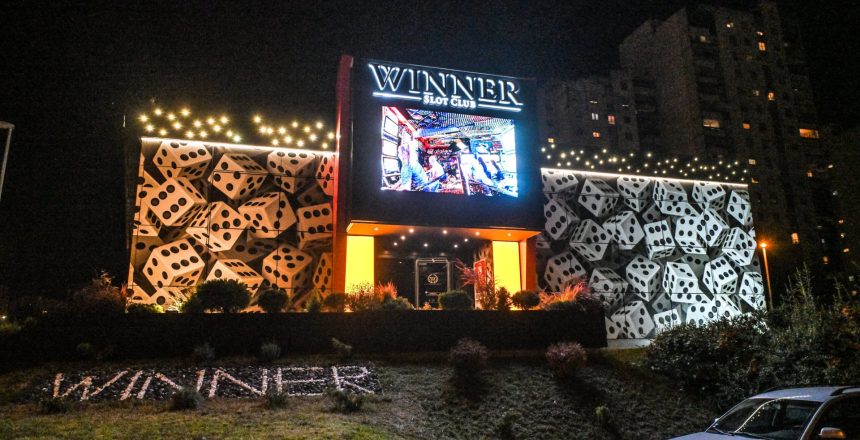The ultimate guide to choosing an LED billboard
How to choose an LED screen that suits your needs?
Choosing an LED billboard is a significant investment for any company that wants to attract the attention of passers-by and potential customers. LED billboards are a modern and effective way of advertising that attracts attention and at the same time reduces advertising costs. In this ultimate guide to choosing an LED screen, we will look at some important factors that should be considered when choosing and buying an LED screen.LED multimedia billboards have become extremely popular in recent years, replacing standard LED billboards. They are efficient and flexible, enabling great visibility and dynamism. They serve to display visually attractive campaigns to promote brands and products.

What is an LED display? Advantages of LED screens
You must have heard about LED screens, but did you know that they represent the most innovative technology that allows us to enjoy images, videos or other types of multimedia content?!Imagine that you are in a square or a stadium, and suddenly a large LED screen appears in front of you showing the latest advertisement, game or concert - something that will surely attract your attention?!The LED screen has a great advantage over other technologies, LED screens are very efficient and durable, with a long service life. This will allow you to use them for years.An LED display uses LEDs to display images, videos, or other types of content. Basically, LEDs are miniature semiconductor devices that emit light when an electric current passes through them.An LED screen consumes much less energy than other devices, making it an environmentally friendly choice. So, apart from providing amazing picture quality and durability, LED display also helps to preserve the environment and save money on electricity bills.LED screen is a great technology that brings us an amazing experience of displaying content, while saving energy and preserving our planet.Types of LED screens
There are two types of LED screens: RGB (red-green-blue) and monochrome LED screens. RGB LED screens use three types of LEDs (red, green and blue) to create all the colors in the spectrum, while monochrome LED screens use only one type of LED (red or yellow).
Selection of LED screen
Before you start thinking about buying an LED billboard, you need to think carefully about your needs and goals. Think about what you want to achieve with the LED billboard and how it will fit into your marketing strategy.Choosing the right LED display can be very challenging, due to the large number of factors that affect the quality and efficiency of LED billboards, including the purpose of the display, type of diodes, screen size, resolution, brightness, contrast, response time, viewing angle, viewing distance, power consumption, the price, the content to be displayed and the location where it will be placed.Choose the LED screen that best suits your needs and that will provide you with high image quality and a long service life.First and foremost, you should decide whether you need an indoor or outdoor LED display. This will affect the size and resistance of the screen.LED screens for outdoor use are usually larger and more resistant to external influences, such as rain, sunlight, wind.On the other hand, indoor LED screens are usually smaller and can be used in indoor areas, such as shopping malls, stores, pharmacies, airports, cinemas, theaters, restaurants, conference rooms, storefronts and glass facades.The size of the LED screen will greatly affect its visibility and appeal and determine how effectively the advertisement will be seen. Large LED screens are effective for advertising products and services, while smaller LED screens are suitable for advertising smaller businesses and events. There are different sizes of LED screens on the market. Large screens will attract more attention, but are usually more expensive and may require special permits to install.It is important to choose an LED screen with the appropriate resolution for your needs, depending on what you plan to display on the screen. Screen resolution is the amount of detail displayed on the screen and is expressed in pixels. The higher the screen resolution, the more detail is displayed on the screen and the clearer the image. Screen resolution may vary depending on screen size, pixel technology, pixel size and viewing distance.Pixel density, ie. the physical distance between two pixels determines the quality of the image. The larger the distance between the pixels, the lower the resolution and the fewer pixels there are on the screen. The smaller the distance between the diodes, the better the resolution, the more pixels there are on the screen and the image will be of better quality. Different LED screens are designed to be viewed from different distances. E.g. LED screens for indoor use are usually smaller and have a higher resolution, as they are intended to be viewed from a shorter distance.If you plan to view the screen from a long distance, you don't need to bother with high resolution, but if you want the screen to be in a closed space then you need a higher resolution screen. E.g. for LED screens P8 (distance between diodes 8mm) it is recommended to be viewed from +8m, while LED screens P3 are viewed from +3m so that the pixels are not visible.LED screens with high resolution are always a better choice, because they have a clearer, sharper and better image display. It should be borne in mind that a higher resolution is usually associated with a higher price of LED screens.Brightness is another important factor that should be considered when choosing an LED screen. The brightness of LED screens is measured in filaments or candelas per square meter. The brightness of the LEDs is of key importance for the visibility of the LED screen during the day and night. The lighting can be controlled and adjusted depending on the lighting conditions at the location of the LED screen.Low-light LED screens are usually cheaper, but may be less effective in low-light conditions. The internal LED screens have a brightness between 500 and 700 nits. Outdoor LED screens are with a brightness of 4,500 nits and more to be visible from greater distances and in direct sunlight. Also consider lighting regulations, as some cities and municipalities have strict regulations on the amount of light that LED screens can emit. Higher brightness usually means higher energy consumption.The refresh rate of the LED screen refers to how many times per second the screen is refreshed with a new image. It is measured in Hz. E.g. if the screen has a refresh rate of 60Hz, it means that the screen is refreshed 60 times per second. A higher refresh rate means that images on the screen will appear smoother and without jerks. Therefore, for LED screens used to display video content, a high refresh rate is important to avoid image blur.The viewing angle of the LED screen refers to the angle from which the image on the screen can be seen without distortion of color or contrast. The larger the viewing angle, the more people will be able to see a clear image on the screen at the same time.The viewing angle is usually specified in the horizontal and vertical directions and can be different for each LED display. Due to the type of LED screen, the viewing angle can be greater than 140 degrees in the horizontal and vertical directions, which enables a clear image from almost any angle. The viewing angle is an important factor when choosing an LED display, especially if it will be placed in a place where a large number of people are expected to view it.The IP mark (Ingress Protection Rating) of the LED screen refers to the degree of protection against the penetration of dust and moisture. It consists of 2 digits, where the first indicates the degree of protection against solid objects (dust, sand, etc.), and the second indicates the degree of protection against moisture. Specifically, the first digit ranges from 0 to 6 and the second from 0 to 9. The higher the first digit, the greater the protection against solid objects, while the larger the second digit indicates greater protection against moisture.For example, IP65 means that the LED screen is completely protected from dust and can withstand water pressure from all directions. IP 54 means that the LED screen is protected against limited dust ingress and is water-resistant by splashing at certain angles.The IP mark is important, because LED screens are very often intended for outdoor installation, they are exposed to various weather conditions and other factors that can affect the performance of the screen. The IP mark helps in choosing the right LED screen that will be able to withstand the conditions in which it will be installed.
Management of LED screens - The way of managing LED screens is primarily influenced by the control card that is part of the screen itself. The possibilities for managing LED screens are unlimited. Even when you are miles away, the controller can be accessed via the internet and prepared content can be played. This is useful if you have multiple screens or if you simply want to control your screen from the comfort of your armchair. So, with an LED screen, you not only get a quality image, but also flexibility in management.In the end, while you want the screen to be beautiful and high-quality, you also have to take into account the budget you have available. When you think about all these factors and determine your needs, you will find the LED screen that suits you perfectly. Choose wisely!Choosing an LED screen can be a significant step for any company that wants to stand out from the crowd and attract the attention of its target customers. LED screens can be effective in promoting your products and services and increasing the visibility of your brand. I hope we have given you a comprehensive overview of everything you need to know before you go shopping for an LED display.


